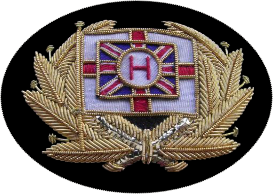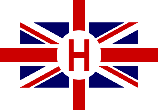Vessel |
1870s |
1880s |
1890s |
1900s |
1910s |
1920s |
1930s |
1940s |
1950s |
|
Athlete |
|
|
|
|
|
|
|
|
|
|
Hercules |
|
|
|
|
|
|
|
|
|
|
Hermes 1 |
|
|
|
|
|
|
|
|
|
|
Hellenes 1 |
|
|
|
|
|
|
|
|
|
|
Hesperides 1 |
|
|
|
|
|
|
|
|
|
|
Heliades |
|
|
|
|
|
|
|
|
|
|
Heraclides 1 |
|
|
|
|
|
|
|
|
|
|
Hellopes 1 |
|
|
|
|
|
|
|
|
|
|
Hippomenes |
|
|
|
|
|
|
|
|
|
|
Hydarnes |
|
|
|
|
|
|
|
|
|
|
Herminius 1 |
|
|
|
|
|
|
|
|
|
|
Horatius |
|
|
|
|
|
|
|
|
|
|
Hermes 2 |
|
|
|
|
|
|
|
|
|
|
Hesperides 2 |
|
|
|
|
|
|
|
|
|
|
Hilarius 1 |
|
|
|
|
|
|
|
|
|
|
Honorius |
|
|
|
|
|
|
|
|
|
|
Hortensius |
|
|
|
|
|
|
|
|
|
|
Hyades |
|
|
|
|
|
|
|
|
|
|
Hyanthes |
|
|
|
|
|
|
|
|
|
|
Hylas |
|
|
|
|
|
|
|
|
|
|
Harmodius |
|
|
|
|
|
|
|
|
|
|
Hellenes 2 |
|
|
|
|
|
|
|
|
|
|
Hostilius |
|
|
|
|
|
|
|
|
|
|
Hydaspes |
|
|
|
|
|
|
|
|
|
|
Harmonides 1 |
|
|
|
|
|
|
|
|
|
|
Halizones 1 |
|
|
|
|
|
|
|
|
|
|
Hyacinthus |
|
|
|
|
|
|
|
|
|
|
Hypatia |
|
|
|
|
|
|
|
|
|
|
Dauntless |
|
|
|
|
|
|
|
|
|
|
Fearless |
|
|
|
|
|
|
|
|
|
|
Helius |
|
|
|
|
|
|
|
|
|
|
Hermione |
|
|
|
|
|
|
|
|
|
|
Hesione 1 |
|
|
|
|
|
|
|
|
|
|
Homerius |
|
|
|
|
|
|
|
|
|
|
Hyperia |
|
|
|
|
|
|
|
|
|
|
Haliartus |
|
|
|
|
|
|
|
|
|
|
Halizones 2 |
|
|
|
|
|
|
|
|
|
|
Harmonides 2 |
|
|
|
|
|
|
|
|
|
|
Harmodius 2 |
|
|
|
|
|
|
|
|
|
|
Halesius 1 |
|
|
|
|
|
|
|
|
|
|
Halizones 3 |
|
|
|
|
|
|
|
|
|
|
Halocrates |
|
|
|
|
|
|
|
|
|
|
Hellopes 2 |
|
|
|
|
|
|
|
|
|
|
Hilarius 2 |
|
|
|
|
|
|
|
|
|
|
Hesperia 1 |
|
|
|
|
|
|
|
|
|
|
Hesperides 3 |
|
|
|
|
|
|
|
|
|
|
Hesione 2 |
|
|
|
|
|
|
|
|
|
|
Heraclides 2 |
|
|
|
|
|
|
|
|
|
|
Hesione 3 |
|
|
|
|
|
|
|
|
|
|
Hesperia 2 |
|
|
|
|
|
|
|
|
|
|
Hesperides 4 |
|
|
|
|
|
|
|
|
|
|
Halesius 2 |
|
|
|
|
|
|
|
|
|
|
Harmodius 3 |
|
|
|
|
|
|
|
|
|
|
Halizones 4 |
|
|
|
|
|
|
|
|
|
|
Hellenes 3 |
|
|
|
|
|
|
|
|
|
|
Herminius 2 |
|
|
|
|
|
|
|
|
|

























































|
|
1870s |
1880s |
1890s |
1900s |
1910s |
1920s |
1930s |
1940s |
1950s |
|
25 - 30 |
|
|
|
|
|
|
|
|
|
|
25 - 30 |
|
|
|
|
|
|
|
|
|
|
20 - 25 |
|
|
|
|
|
|
|
|
|
|
15 - 20 |
|
|
|
|
|
|
|
|
|
|
10 - 15 |
|
|
|
|
|
|
|
|
|
|
5 - 10 |
|
|
|
|
|
|
|
|
|
|
0 - 5 |
|
|
|
|
|
|
|
|
|




















